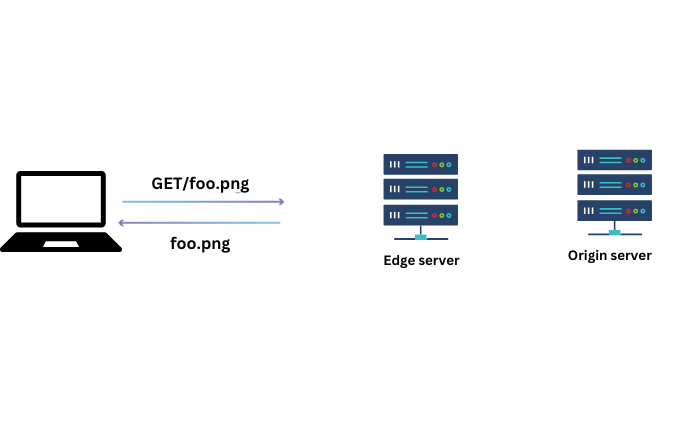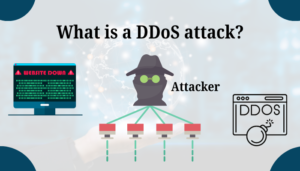An origin server is the main source of content on a website. It stores and delivers all the website’s files, such as HTML pages, images, videos, and other data. When you visit a website, your browser sends a request to the origin server to access these files. The server then processes this request and sends the needed information back to your browser.
Think of the origin server as the heart of a website. It keeps all the essential data and ensures that visitors get the right content when they need it. Without an origin server, a website cannot function because there would be no place to store and retrieve the site’s data.
How an Origin server works?
- Hosting Content: The origin server stores all the website’s files, including HTML, CSS, images, videos, and other data. Think of it as the main storage for everything that makes up the website.
- Handling Requests: When you type a web address in your browser or click a link, your request travels through the internet to the origin server. The server processes this request and sends back the needed files so your browser can display the website.
- Ensuring Security: Origin servers often include security measures like SSL certificates to encrypt data. This encryption protects your information when you interact with the website.
- Dynamic Content Delivery: For websites that change frequently, like social media or news sites, the origin server creates and sends dynamic content based on user interactions and real-time data.
Why Origin Servers Matter
- Performance: The speed of an origin server affects how quickly a website loads. A fast server ensures a better user experience, keeping visitors happy and engaged.
- Reliability: A reliable origin server reduces downtime, meaning the website remains accessible to users. Regular maintenance and good infrastructure support reliability.
- Scalability: As web traffic grows, the origin server must handle more requests. Modern origin servers can scale up to manage high traffic, ensuring the website performs well even during peak times.
- Security: Protecting user data is crucial. Origin servers play a major role in securing data transactions between the server and the user’s device, preventing unauthorized access and data breaches.
- Content Management: For website owners, an origin server provides tools and interfaces to manage website content easily. This management includes updating web pages, adding new features, and monitoring site performance.
Common Use Cases
- E-commerce Sites: Origin servers host product information, images, user accounts, and transaction data for online stores.
- Streaming Services: These servers deliver video and audio content to users, ensuring smooth playback and high-quality streams.
- News Websites: Origin servers dynamically generate and serve updated news articles and multimedia content.
What is the difference between an origin server and a CDN Edge server?

Understanding the difference between an origin server and a CDN edge server helps you see how the internet delivers content quickly and efficiently. Here’s a clear explanation of both.
Origin Server
An origin server is the main source of your website’s content. Here’s how it works:
- Hosts Original Content: It stores all the files that make up your website, like HTML, images, videos, and scripts.
- Handles User Requests: When someone visits your website, their request goes to the origin server, which sends back the needed files.
- Central Location: The origin server usually stays in one location, making it the primary source of truth for your website.
CDN Edge Server
A CDN (Content Delivery Network) edge server is part of a network designed to deliver content more efficiently. Here’s how it works:
- Stores Copies of Content: It keeps cached copies of your website’s content, like images and videos.
- Handles Local Requests: When someone visits your website, their request can go to a nearby CDN edge server instead of the origin server. This server sends back the cached content.
- Distributed Locations: CDN edge servers are spread out around the world to be closer to users, reducing the time it takes to load content.
Key Differences
- Location and distribution
- Origin Server: Usually in a single location. It serves as the main hub for your website’s content.
- CDN Edge Server: Located in multiple places around the world. It helps deliver content faster by being closer to users.
- Content Delivery
- Origin Server: Delivers original content directly to users.
- CDN Edge Server: Delivers cached content quickly, reducing the load on the origin server and speeding up content delivery.
- Performance
- Origin Server: Performance can slow down if many users access the website at the same time, especially if they are far from the server.
- CDN Edge Server: Improves performance by reducing the distance between the server and users, leading to faster load times.
- Load Handling
- Origin Server: Can become overwhelmed with high traffic, leading to slower response times.
- CDN Edge Server: Helps balance the load by distributing traffic across multiple servers, preventing overload.
- Fault Tolerance
- Origin Server: If it goes down, your website can become unavailable.
- CDN Edge Server: Provides redundancy. If one edge server fails, another can take over, ensuring your website stays online.
Use Cases
- High-Traffic Websites: Using a CDN can help handle large numbers of visitors without slowing down.
- Global Reach: For websites with users worldwide, CDN edge servers ensure fast content delivery everywhere.
- Media-Rich Sites: Sites with lots of images, videos, and other media benefit from the caching and fast delivery of CDNs.
Can an Origin server still be attacked while using a CDN?
Yes, an origin server can still be attacked even when using a Content Delivery Network (CDN). However, a CDN can reduce the risk and impact of such attacks. Here’s how this works:
Understanding the role of a CDN
A CDN helps distribute your website’s content across multiple servers around the world. These servers, called edge servers, store cached copies of your site’s content and deliver it to users from locations closer to them. This setup improves website speed and performance and provides some security benefits.
How an Origin Server Can Be Attacked?
Even with a CDN, attackers can target the origin server in several ways:
- Direct Attacks: If attackers discover the IP address of the origin server, they can bypass the CDN and attack the server directly. Common types of attacks include distributed denial of service (DDoS) attacks and direct hacking attempts.
- Cache Misses: When the requested content is not cached on the CDN’s edge servers, the request goes back to the origin server. Attackers can exploit this by repeatedly requesting non-cached content, overwhelming the origin server.
- Exploiting Vulnerabilities: Attackers can find and exploit vulnerabilities in the origin server’s software or configuration, causing security breaches or server downtime.
How a CDN Helps Mitigate Attacks?
While a CDN cannot completely prevent attacks on the origin server, it provides several protective measures:
- Traffic Distribution: A CDN distributes incoming traffic across multiple edge servers, reducing the load on the origin server. This makes it harder for attackers to overwhelm the origin server with traffic.
- IP Masking: CDNs can hide the origin server’s IP address, making it difficult for attackers to target the server directly. However, if the IP address is exposed, this protection is compromised.
- Rate Limiting: CDNs can implement rate limiting to control the number of requests coming from a single source. This helps prevent DDoS attacks from overwhelming the origin server.
- Web Application Firewalls (WAF): Many CDNs offer integrated WAF services that filter out malicious traffic before it reaches the origin server. This provides an additional layer of security.
- DDoS Protection: CDNs have large, distributed networks that can absorb and mitigate DDoS attacks, protecting the origin server from excessive traffic.
Best Practices for Protecting the Origin Server
To further enhance the security of your origin server, consider these practices:
- Secure the Origin Server: Regularly update and patch the server’s software to fix vulnerabilities. Use strong passwords and two-factor authentication to protect access.
- Restrict Direct Access: Limit direct access to the origin server by allowing only trusted IP addresses, such as those of the CDN.
- Monitor Traffic: Keep an eye on traffic patterns to detect unusual activities that might indicate an attack.
- Backup Data: Regularly back up your server data to recover quickly in case of an attack..


